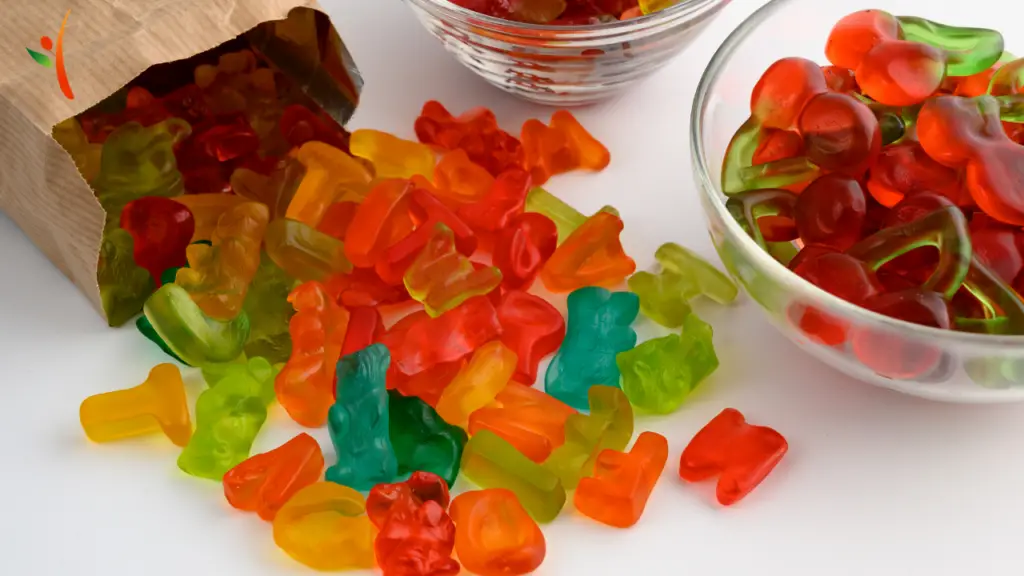Celiac patients and those suffering from gluten sensitivities have to scrutinize the ingredients of the food they consume. It often becomes a tiresome process, and you want an easy way out.
For this reason, it's crucial to know the gluten-content of the food you're adding to your daily meal plans. In the same way, gelatin is present in numerous foods, sometimes hidden from the common eye. But is having gelatin safe on a gluten-free diet? Keep reading to know whether you can eat gelatin on your diet.
What is Gelatin?
Put merely; gelatin is a product derived from cooking animal collagen. Collagen is the protein-extract present in bones and connective tissues of various animals. Gelatin gets its name from its property, where it forms a gelatinous texture once it partially cools down. The commercially sold gelatin is a colorless and flavorless ingredient. Additionally, gelatin in stores comes in two forms- sheets and powder.
On the other hand, gelatin can be home-made as well. All you've to do is boil the collagen-containing parts in water. Everyday use of this technique is when making soups and broths for an enhanced flavor and nutrition.
What Can You Use Gelatin For?
Gelatin has become a famous gelling agent in many fields, including the culinary world. You may be wondering, what exactly is its purpose? Gelatin solidifies at a given temperature, which helps give liquid mixtures a balanced form. Moreover, it melts at room temperature, making the food attain a creamy texture in your mouth.
For starters, gelatin gives food a jelly-like texture needed for many desserts such as fruit trifles, puddings, etc. It is a stabilizer or thickener for many foods, like yogurt, ice cream, cream cheese, etc. The food industry has also made extensive use of gelatin for a wide range of products. Snacks such as gummy bears, fruit candies, marshmallows, etc. use gelatin for thickening and texture.

Gluten and Gelatin-
Now that you know what gelatin is, you'd be questioning its gluten-content. Let's recap; gelatin is a protein extract of animals. On the contrary, gluten is in grains of wheat, rye, and barley.
Some might assume that since gelatin is mainly protein and gluten, they're the same. However, gelatin is an animal-derived product and has nothing to do with gluten-containing grains. Hence, it is entirely safe to use gelatin in your recipes to attain the texture and structure you desire.
But let's talk about Jell-O, the wide range of gelatin-based desserts enjoyed by many. One of the main reasons Jell-O is popular is that it's a quick dessert without a lot of work. The primary ingredient used in Jell-O desserts is gelatin. However, there are other ingredients used, such as sugar, artificial flavors, and colors. These improve the texture, taste, and structure of the end-product.
However, these simple gelatin desserts can become a hurdle to those trying to avoid gluten. While Jell-O desserts themselves use naturally gluten-free ingredients, artificial ingredients might contain gluten. Although even artificial ingredients in Jell-O typically use gluten-free ingredients, cross-contamination is still a possibility.
The case is that factories or manufacturers of Jell-O products might manufacture other gluten-containing products as well. For this reason, pre-packaged Jell-O products might pertain to risk to those trying to avoid gluten.
Gluten-Free Strawberry Dessert
We all crave an excellent old gelatin-based dessert sometimes to satisfy our sweet tooth. Here's a simple recipe for a gluten-free strawberry dessert using strawberry Jell-O:

Ingredients
For the Strawberry Sauce:
- 1 cup strawberry, hulled and chopped
- 6 tablespoon sugar
For Gluten-Free Biscuit Base:
- 16 gluten-free Digestive biscuit
- 3 tablespoon butter
- 8 strawberries, hulled and cut in half
For Soufflé:
- 1 packet gluten-free strawberry jello
- ½ cup of water
- 4 tablespoon of lemon juice
- 1 can evaporated milk, chilled
- 1 cup cream, chilled
Directions
For Strawberry Sauce:
- Add in the sugar to the chopped strawberries in your saucepan. Turn on the stove at medium-low heat and cook for 10 minutes. Blend the mixture into a smooth sauce. Set aside to cool.
For Gluten-Free Biscuit Base:
- Add butter and biscuits to a food processor and grind. Spread the mixture in a square dish.
- Place a few strawberries at the sides. Place the dish in the refrigerator to let the base chill for 30 minutes.
For Gluten-Free Souffle:
- Mix Jello, lemon juice, and water in a pan. Bring the mixture to boil and keep cooking till the gelatin crystals have completely dissolved.
- Add evaporated milk to a large bowl and whisk until the volume has doubled.
- Add chilled cream to a bowl and whisk until you see soft peaks form.
Assembling:
- Pour the strawberry sauce and whipped cream in the evaporated milk and whisk until thoroughly combined.
- Add the jello with a spatula.
- Pour the souffle over the biscuit base and refrigerate for 4 hours.
- Add the sauce, cream, and milk mixture over the souffle. Garnish with biscuits and strawberries.
Cooking with Gelatin

What are the basics you should know about gelatin? Gelatin needs to heat and then cool to solidify. And is the ‘activation' of gelatin where gelatin is dissolved and heated into a liquid. For powdered gelatin, it needs to be mixed in warm water and sit for a few minutes. Simultaneously, gelatin sheets are soaked in water for around five minutes.
The excessive moisture is wrung out before using it in your recipe. However, do ensure you're not boiling gelatin since gluten loses its solidifying properties if given too much heat. Similarly, some foods contain enzymes that can break gelatin's structure, so it is essential to check beforehand.
What are Common Gelatin Substitutes?
If you're following a vegan diet as well alongside a gluten-free diet, you'd want to look for vegan substitutes. Since gelatin comes from animal collagen, those on a vegan diet tend to avoid using it in the kitchen.
Before you start to worry, other alternative ingredients perform as a similar gelling agent as gelatin. The most common substitutes are xanthan gum, arrowroot, guar gum, and kudzu. You can easily find these alternatives in-store and choose the one that is best for your uses.
Health Benefits of Gelatin
Gelatin, a protein-rich source, has more benefits than just solidifying food. If you're thinking of adding it to soups and desserts, it'll provide you the extra nutrition you need. Simultaneously, research proves gelatin can improve your overall health. Some of the benefits of consuming gelatin are:

- Skin and Hair- The main component in gelatin is the collagen. Guess what, your skin also contains collagen, and the more collagen it has, the better your skin is. Hence, many supplements use gelatin to enhance the production of collagen for moisturized skin. Similarly, gelatin is also known to improve hair thickness and its average growth. So, if you're looking for hydrated skin and healthier hair, gelatin can be the magic ingredient for you.
- Bones and Joints- Collagen production, bones, and joint health go together—improved collagen production aids in reducing pain when bones rub against each other. The reason for this is that collagen enhances the growth and repair of cartilage tissue between the bones. While the body makes its collagen, consuming gelatin can further help increase its production.
- Weight Loss- Those who are trying to lose weight often go for a high-protein diet. A high-protein diet makes you feel fuller and reduces your appetite. Gelatin is also low in carbs and fats, which results in an overall low percentage of calories. As a result, you'll be eating less and cutting out on excess calories, which can help control your weight.
- Lowering Risk of Diabetes- Diabetes patients need to control their blood sugar levels. The glycine group found in gelatin helps to balance blood sugar levels of diabetes patients. Therefore, adding gelatin can reduce the risk of diabetes and help diabetes patients by leveling blood sugar.
Conclusion
Gelatin and a gluten-free diet go hand in hand with each other. Moreover, you SHOULD be adding it to your diet plan considering the benefits it brings to your health.
If you're extremely allergic to gluten or suffer from severe celiac disease, it'd be better to make your own Jell-O. Other than that, gelatin is as safe as an ingredient that can come on a gluten-free diet.
The owner of this website, HealthYeahLife.com, is a participant in the Amazon Services LLC Associates Program, an affiliate advertising program designed to provide a means for sites to earn advertising fees by advertising and linking HealthYeahLife.com Review to Amazon properties including, but not limited to, amazon.com.


